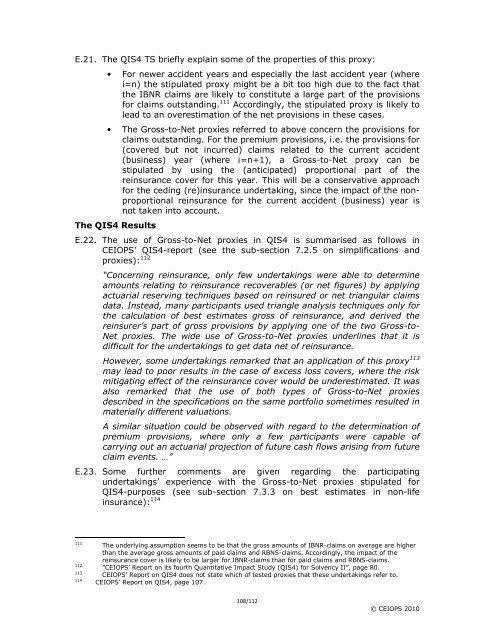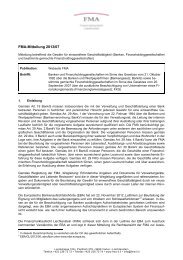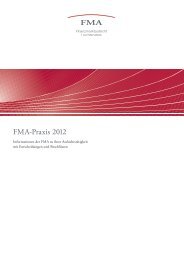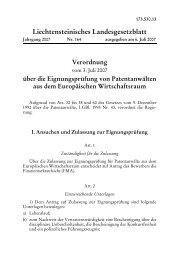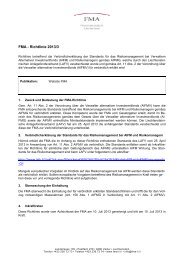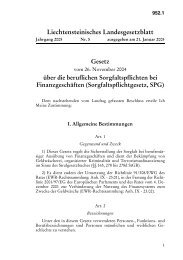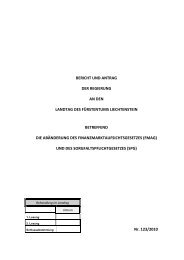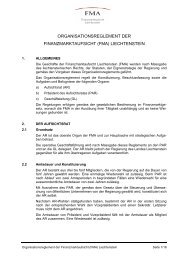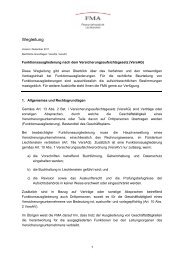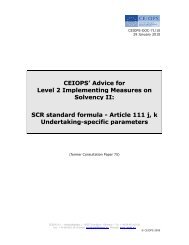CEIOPS' Advice for Level 2 Implementing ... - EIOPA - Europa
CEIOPS' Advice for Level 2 Implementing ... - EIOPA - Europa
CEIOPS' Advice for Level 2 Implementing ... - EIOPA - Europa
Create successful ePaper yourself
Turn your PDF publications into a flip-book with our unique Google optimized e-Paper software.
E.21. The QIS4 TS briefly explain some of the properties of this proxy:<br />
• For newer accident years and especially the last accident year (where<br />
i=n) the stipulated proxy might be a bit too high due to the fact that<br />
the IBNR claims are likely to constitute a large part of the provisions<br />
<strong>for</strong> claims outstanding. 111 Accordingly, the stipulated proxy is likely to<br />
lead to an overestimation of the net provisions in these cases.<br />
• The Gross-to-Net proxies referred to above concern the provisions <strong>for</strong><br />
claims outstanding. For the premium provisions, i.e. the provisions <strong>for</strong><br />
(covered but not incurred) claims related to the current accident<br />
(business) year (where i=n+1), a Gross-to-Net proxy can be<br />
stipulated by using the (anticipated) proportional part of the<br />
reinsurance cover <strong>for</strong> this year. This will be a conservative approach<br />
<strong>for</strong> the ceding (re)insurance undertaking, since the impact of the nonproportional<br />
reinsurance <strong>for</strong> the current accident (business) year is<br />
not taken into account.<br />
The QIS4 Results<br />
E.22. The use of Gross-to-Net proxies in QIS4 is summarised as follows in<br />
CEIOPS’ QIS4-report (see the sub-section 7.2.5 on simplifications and<br />
proxies): 112<br />
“Concerning reinsurance, only few undertakings were able to determine<br />
amounts relating to reinsurance recoverables (or net figures) by applying<br />
actuarial reserving techniques based on reinsured or net triangular claims<br />
data. Instead, many participants used triangle analysis techniques only <strong>for</strong><br />
the calculation of best estimates gross of reinsurance, and derived the<br />
reinsurer’s part of gross provisions by applying one of the two Gross-to-<br />
Net proxies. The wide use of Gross-to-Net proxies underlines that it is<br />
difficult <strong>for</strong> the undertakings to get data net of reinsurance.<br />
However, some undertakings remarked that an application of this proxy 113<br />
may lead to poor results in the case of excess loss covers, where the risk<br />
mitigating effect of the reinsurance cover would be underestimated. It was<br />
also remarked that the use of both types of Gross-to-Net proxies<br />
described in the specifications on the same portfolio sometimes resulted in<br />
materially different valuations.<br />
A similar situation could be observed with regard to the determination of<br />
premium provisions, where only a few participants were capable of<br />
carrying out an actuarial projection of future cash flows arising from future<br />
claim events. …”<br />
E.23. Some further comments are given regarding the participating<br />
undertakings’ experience with the Gross-to-Net proxies stipulated <strong>for</strong><br />
QIS4-purposes (see sub-section 7.3.3 on best estimates in non-life<br />
insurance): 114<br />
111 The underlying assumption seems to be that the gross amounts of IBNR-claims on average are higher<br />
than the average gross amounts of paid claims and RBNS-claims. Accordingly, the impact of the<br />
reinsurance cover is likely to be larger <strong>for</strong> IBNR-claims than <strong>for</strong> paid claims and RBNS-claims.<br />
112 ”CEIOPS’ Report on its fourth Quantitative Impact Study (QIS4) <strong>for</strong> Solvency II”, page 80.<br />
113 CEIOPS’ Report on QIS4 does not state which of tested proxies that these undertakings refer to.<br />
114 CEIOPS’ Report on QIS4, page 107.<br />
108/112<br />
© CEIOPS 2010


